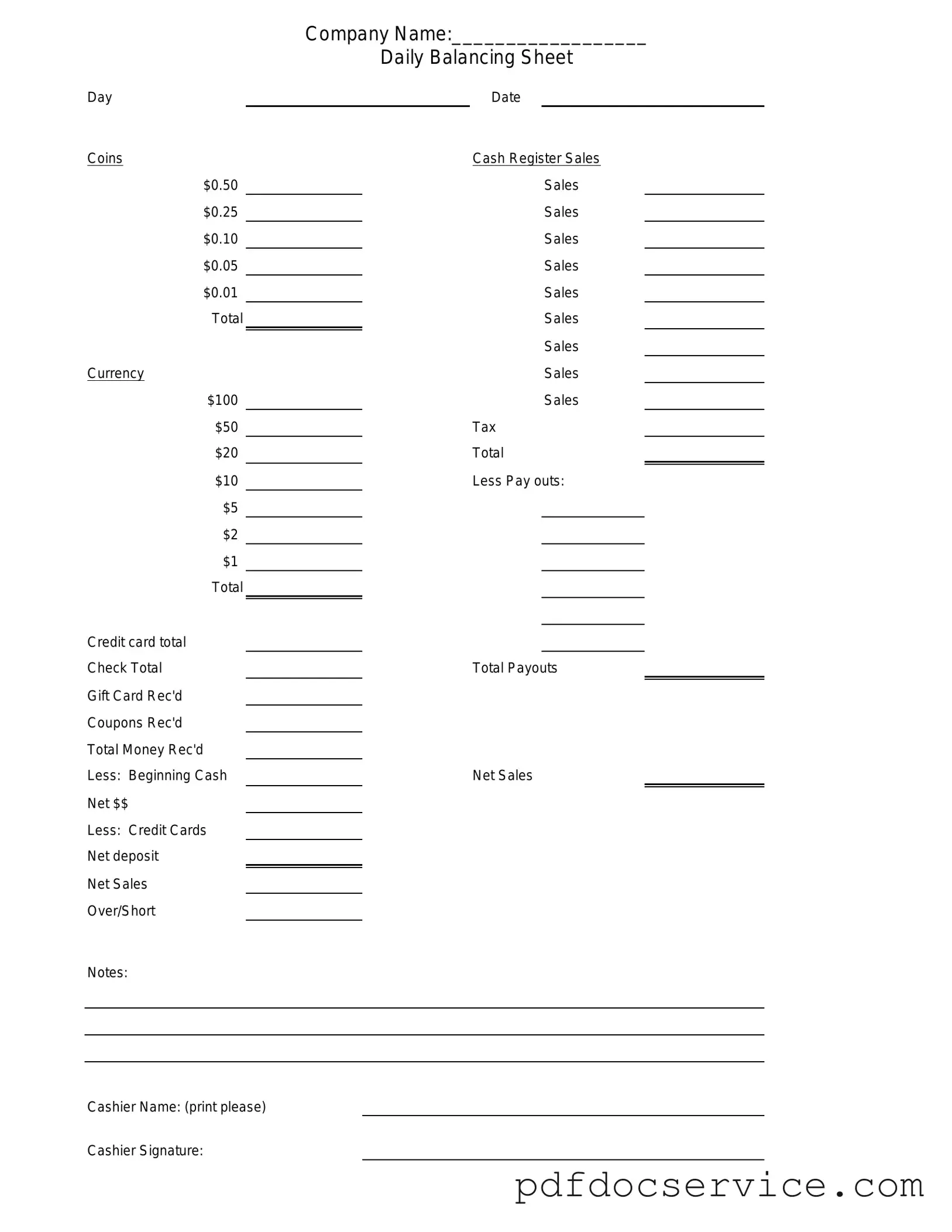Fill Your Cash Drawer Count Sheet Form
The Cash Drawer Count Sheet is a tool used by businesses to track and verify the amount of cash in a cash drawer at the end of a shift or business day. This form helps ensure accuracy in cash handling and provides a clear record for financial accountability. By documenting the cash count, businesses can identify discrepancies and maintain proper financial controls.
Open Cash Drawer Count Sheet Editor
